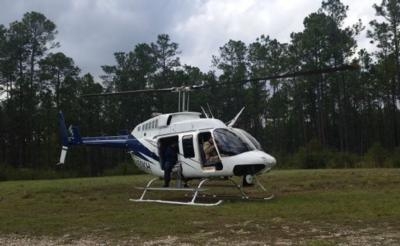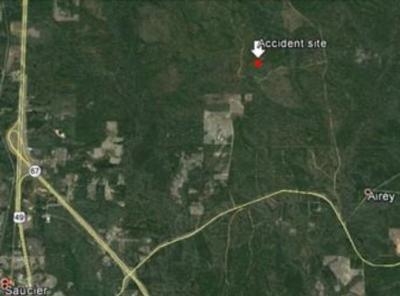Two Fatally Injured When The Aircraft Setting Controlled Burns Went Down In Mississippi
A 90-page "Learning Review" has been released by the U.S. Forest Service analyzing an accident which occurred on March 30, 2015 that fatally injured contract pilot Brandon Ricks and Forest Service employee Steve Cobb. Another Forest Service employee was seriously injured in the accident.

According to the NTSB, the Bell 206 operated by T&M Aviation of Louisiana, experienced a "loss of engine power for reasons that could not be determined."
The aircraft was engaged in setting controlled burns by dropping plastic balls of flammable material. Fire Aviation reports that the aircraft failed to start on the first attempt before the accident flight. The aircraft made about 12 passes over the prescribed burn area, and had been airborne for about an hour before the helicopter went down.
According to the Forest Service document:
"The primary purpose for utilizing helicopters for aerial ignition in this region is to mitigate the exposure of ground resources to the hazards of hand-lighting units. For Unit 1459, like most units on the De Soto Ranger District, a combination of the vegetation, terrain, and fire behavior make hand-lighting units inefficient and hazardous. Flame lengths of greater than four feet combined with difficult walking conditions raise a red flag for a burn boss concerning firefighter safety. Plants such as palmetto (Serenoa repens), gallberry (Llex spp.), ti-ti (Cyrilla racemiflora), and smilax (Smilax spp.) when combined with needles from longleaf, slash, and Loblolly pines can create flame lengths in excess of 10 feet with as little as a two-to-three year accumulation of dead material. These species are also very difficult to traverse. Smilax vines can ensnare firefighters and drip torches and stop them in their tracks. This area also still has some large dead fuel
concentrations as a result of Hurricane Katrina. In these areas people working in the woods may encounter downed timber that can stop heavy equipment from forward progress."
Aircraft setting such burns are required to fly "low and slow" to effectively complete the mission, and hovering out of ground effect (HOGE) is the typical flight profile.

The report says that the risk assessment of the flight:
"did not consider the flight profile, as it was already determined that low/slow was necessary in order to accomplish the work. The fact that the recommendations for airspeed and altitude were heavily influenced by the capability of the PSD likely influenced a gradual decay over time of the options and decision space for the pilot to maintain optimal combinations of airspeed and altitude. The fact that this is a successful tool available for conducting prescribed burn operations, sets the stage to “justify” its use, rather than to prompt the agency to look at better options or technology.
"The acknowledgement of these flight conditions in agency guides likely affects the deliberate acceptance of a “low and slow” profile as necessary for the accomplishment of the mission. A low/slow flight profile makes sense because it is suggested within written procedure. Over a period of time (4+ decades), confidence and acceptability of the flight parameters strengthens with each successful mission, along with a slight departure from the awareness of the hazards associated with the flight profiles. This is a demonstration of how the production goals creep into mission planning to dominate the protection goals without recognition of such. In this case, all required policy was followed and personnel were conducting their work within the operational norms set up by agency policy and culture."
The Learning Review recommends that the machines that distribute the plastic spheres be modified to allow helicopters to fly higher and faster and still effectively deliver the spheres, and to investigate alternate means of aerial ignitions to mitigate the low and slow flight profile.
(Images from Forest Service Learning Review)
 ANN's Daily Aero-Term (05.17.24): Very High Frequency
ANN's Daily Aero-Term (05.17.24): Very High Frequency ANN's Daily Aero-Linx (05.17.24)
ANN's Daily Aero-Linx (05.17.24) ANN FAQ: Submit a News Story!
ANN FAQ: Submit a News Story! Classic Aero-TV: ANN Visits Wings Over The Rockies Exploration Of Flight
Classic Aero-TV: ANN Visits Wings Over The Rockies Exploration Of Flight Airborne Affordable Flyers 05.16.24: PRA Runway, Wag-Aero Sold, Young Eagles
Airborne Affordable Flyers 05.16.24: PRA Runway, Wag-Aero Sold, Young Eagles




